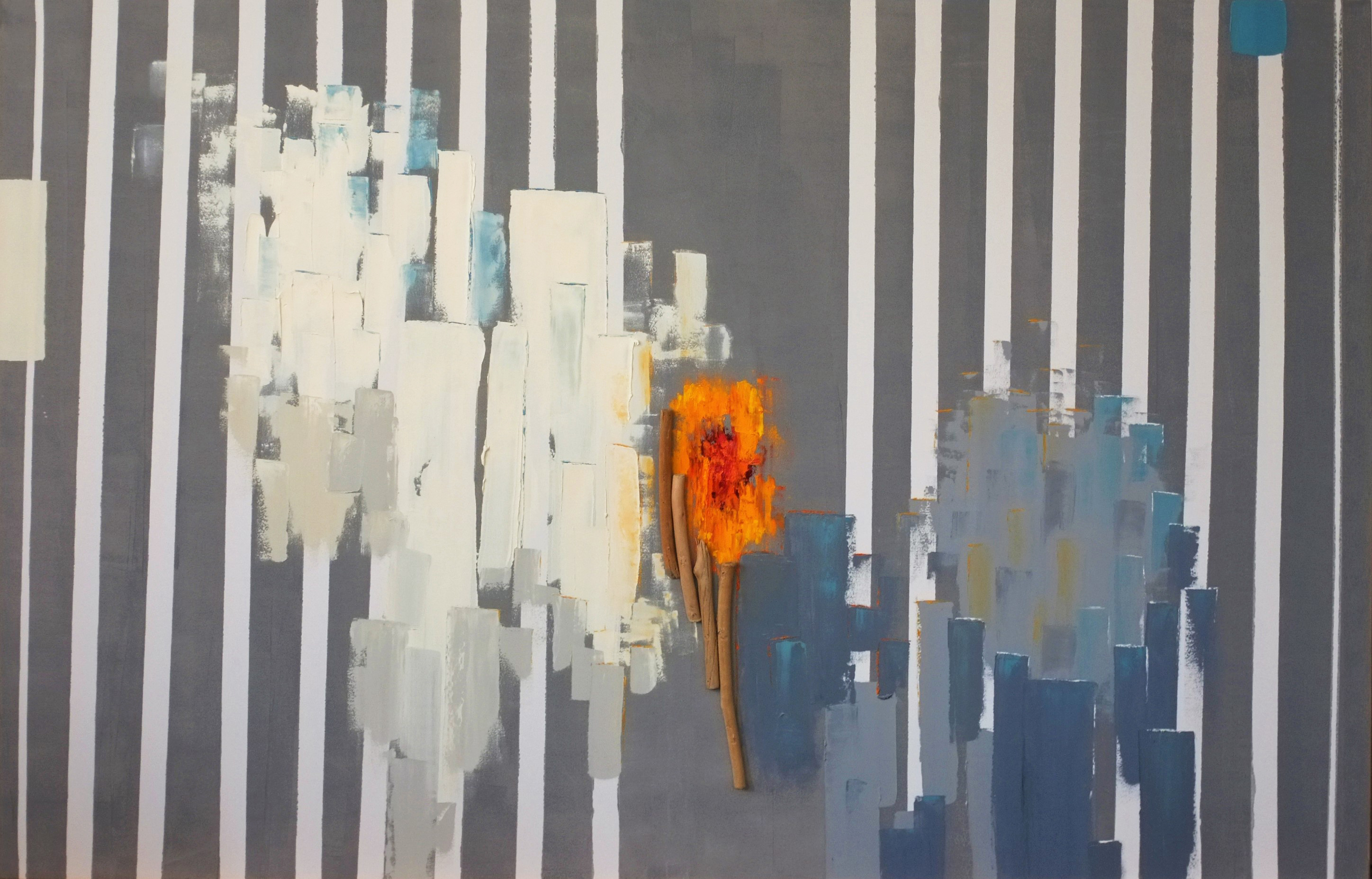Heavily inspired by literature in her abstract compositions and offering a fresh approach to the concept of space, Müge Ceyhan is one of those artists who still experience a childhood enthusiasm while creating art, and she is confident in her intuition. We talked to Müge about her creative journey and her main sources of inspiration.
How did your artistic journey begin? In which period of your life and how did you develop your interest in art?
As a child, story books with pictures became the first building blocks of my imagination, colors and patterns. With a limitless, ruleless and infinite enthusiasm pouring out of my color pencils, I began to draw big worlds onto small pieces of paper, like every child does. Looking at it now, I notice I still keep doing the same. Although actions and methods change, I basically work without making a distinction between literature and painting. The books I read have no images; but the magic of literature and the artistic viewpoint I have acquired throughout the years allow me to create my compositions.
Why do you prefer abstract art? Do you always work that way? Do you also have figurative works?
Of course, during my art education I did works involving anatomy, figure and still life. In the final years of my B.F.A., I began to produce exclusively abstract works and also to feel that this gave me more freedom. On the other hand, I think that the abstract offers the viewer more room for interpretation and this is pleasant for me.

Looking at your compositions I often feel like looking at an urban silhouette. Can we argue that your works contain some references to the concepts of city and architecture?
In my recent works that contain more spatiality compared to the past, singular elements are also more highly pronounced and dominant. This, in turn, generates a feeling of space for the viewer. While the city systems we live in are based on filling all the empty spaces, while we struggle to breathe in our cages of concrete, this feeling is unavoidable.
Yes, this is a correct interpretation; but these silhouettes are often utopian cities, towns, villages… They are living spaces that perhaps do not exist…

Color is another element that is at the core of your paintings. Can you tell us more about your relationship with color? Do you assign a symbolic meaning to the colors in your works?
This is a great question! Like many other artists my synesthetic feelings are activated as I start opening the oil color tubes and I let them guide me from that moment on. Moreover, I prefer allowing every single color to speak since each carries a meaning and has something to say. For instance, if “Green” wants to sing a melody I try to build a basis for it. A street in a dark and quiet night where everyone is in a fantasizing retreat and the only missing piece is a “Green” melody, for example… this way, anyone can hear and understand it. In short, they tell me what to do.
Your favorite artists?
Cy Twombly’s naive creativity, Mariana Nelson’s unique and organic style, Jessica Stockholder’s colorful installations, Rothko’s minimalism and Lucio Fontana’s accents made in one single movement.
And those texts, authors and theories that inspire you the most?
There are some books that make me create specific works. For me, literature is in itself a source of inspiration anyways, and I cannot mention everything. So I will shortly mention the most important ones. First, Edgar Allan Poe’s Gothic world has had a dystopian effect in many works of mine but this effect is tale-like and far from its realistic meaning. Metin Arditi’s Turquetto, Ebony Tower by John Fowles and Jitterbug Perfume by Tom Robbins are also important books for me. The must-have art books in my library include Graham Whitham and Grant Pooke’s Understand Contemporary Art and DADA MANİFESTOLARI (Turkish) published by Altıkırkbeş. And John Berger’s Ways of Seeing.
Can you talk about “Where Is Sancho”, your most recent group exhibition?
I enjoyed it a lot. The idea came from my re-reading of Don Quixote. Taking the same journey with Cervantes’s 17th-century cult oeuvre, where the old aristocrat Alonso Quijano imagines a world without evil in it and embarks on knighthood, pushed me to experiment new materials, textures and approaches. Don Quixote’s naïve mentality, his confidence in the legitimacy of his actions, his belief and the purity he dreams of… In other words, Utopian Socialism manifested its strong influence in the colors and compositions of my canvases.

Do you have any exhibition projects awaiting us in the near future? Or new works you are planning to focus on?
Yes, I have new projects both in painting and literature. My new series will be about “squeezed houses”. The viewers looking at more generic silhouettes in my previous works will now experience a closer and more private point of view. On the other hand, the draft of my book on which I have been working for the last two years will be a bit closer to finalization.
Click for the artist’s page.

